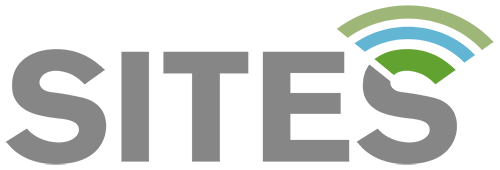About
Dear user,
We are pleased that you’ve found your way to INTERACT GIS, let us briefly explain what it does and who made it work. INTERACT GIS may be called a geographic metadata information system – its basic functionality is to collect metadata regarding the activities performed at Arctic field-stations, and to disseminate the information for station administration, public outreach, and inclusion in other metadata repositories.Its current focus is set on research and monitoring regarding high-latitude environments, having been prototyped at the subarctic research and monitoring stations at Abisko and Tarfala in northernmost Sweden.It is a system with considerable depth, offering extensive tools for station administration including applications for permission to visit stations and management of publication records.It is a truly networked system, allowing the public to query research and monitoring activities across any selection of stations and disciplines.It is due to OPEN development, and is suggested to be equipped with support for disseminating monitoring data products, sharing material resources across stations, and pointing from metadata towards repositories of actual research data.The number of stations expected to join the system is large, beginning with an offer to the 85 stations associated with the INTERACT infrastructure project(www.eu-interact.org), and continuing with the nine Swedish field-stations that constitute the SITES consortium(www.fieldsites.se/en/). The scientific aim of INTERACT GIS is to offer information regarding station activities for station managers to consider as decision support when new activities are planned.This has the potential of reducing redundancy in the collective monitoring and research effort across the Arctic, and thus increasing the cost-benefit ratio of studying the Arctic environment.In addition, it may contribute to turning historically isolated stations into collective collaboration regarding research and monitoring across the North.
INTERACT GIS was invented by Dr. Tomas Thierfelder, a senior scientist at the Swedish University of Agricultural Sciences (SLU), who has acted as principal investigator and entrepreneur through the entire 6-year period of system specification, development and implementation. INTERACT GIS is legally owned by SLU, with Dr. Thierfelder owning the intellectual property. INTERACT GIS is developed and operated by ICT Services and System Development at Umeå University (UmU ITS), Sweden.
We are very grateful to our financial sponsors:
- The INTERACT infrastructure project (Seventh European Framework Programme and Horizon 2020).
- Abisko Scientific Research Station(various funding sources).
- Tarfala Research Station (various funding sources).
- SITES - Swedish Infrastructure for Ecosystem Science (Swedish Research Council).
The main contributing people are:
- Tomas Thierfelder, Initiator and principal investigator.
- Britta Löfvenberg. IT-leader at UmU ITS.
- Per Hörnblad. IT-architect at UmU ITS.
- Anders Printz. Systems developer at UmU ITS.
- Lisa Hörnberg. Systems developer at UmU ITS.
- Anton Lindfors. Systems developer at UmU ITS.
- Elmer Topp-Jørgensen. INTERACT representative.
- Morten Rasch. INTERACT representative.
- Hannele Savela. POLARIN and Oulu University.
- Blaize Denfeld. SITES/SLU.
- Holger Villwock. SITES/SLU.
- Mohsen Bashang. Former systems developer at SLU.
- Sofia Bryntse. Former IT-architect at SLU.
- Christer Jonasson. Former manager at Abisko Scientific Research Station.
- Gunhild “Ninis” Rosqvist. Manager at Tarfala Research Station.
- Magnus Augner. Manager at Abisko Scientific Research Station.
- Annika Kristoffersson. IT-Officer at Abisko Scientific Research Station.
- Terry Callaghan. Former manager of Abisko Scientific Research Station.
- Lots of exam workers, students, and trainees.
INTERACT GIS is the intellectual property of the Swedish University of Agricultural Sciences SLU.
INTERACT GIS captures and processes personal data that fall within the framework of EU’s General Data Protection Regulation GDPR.
